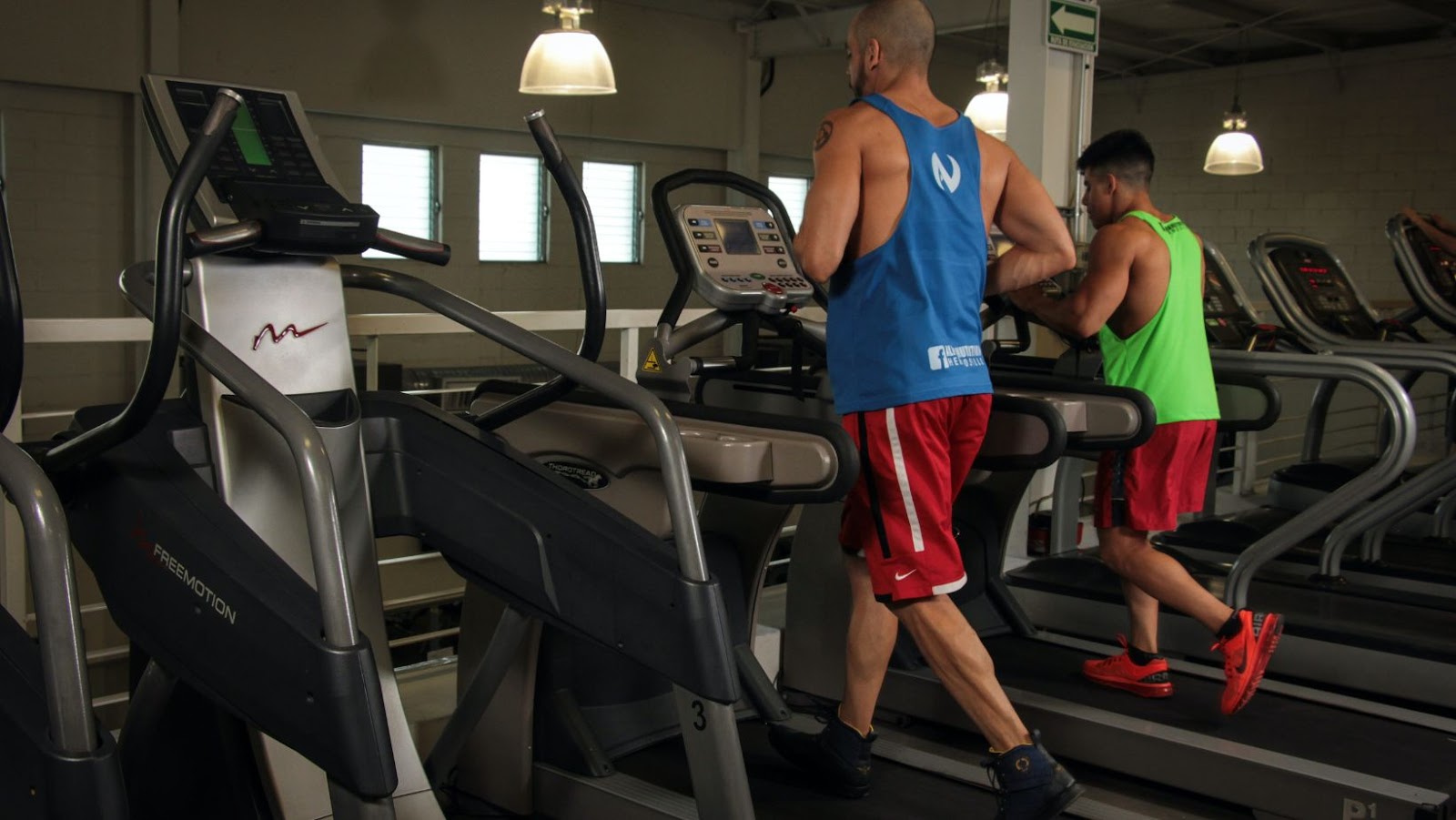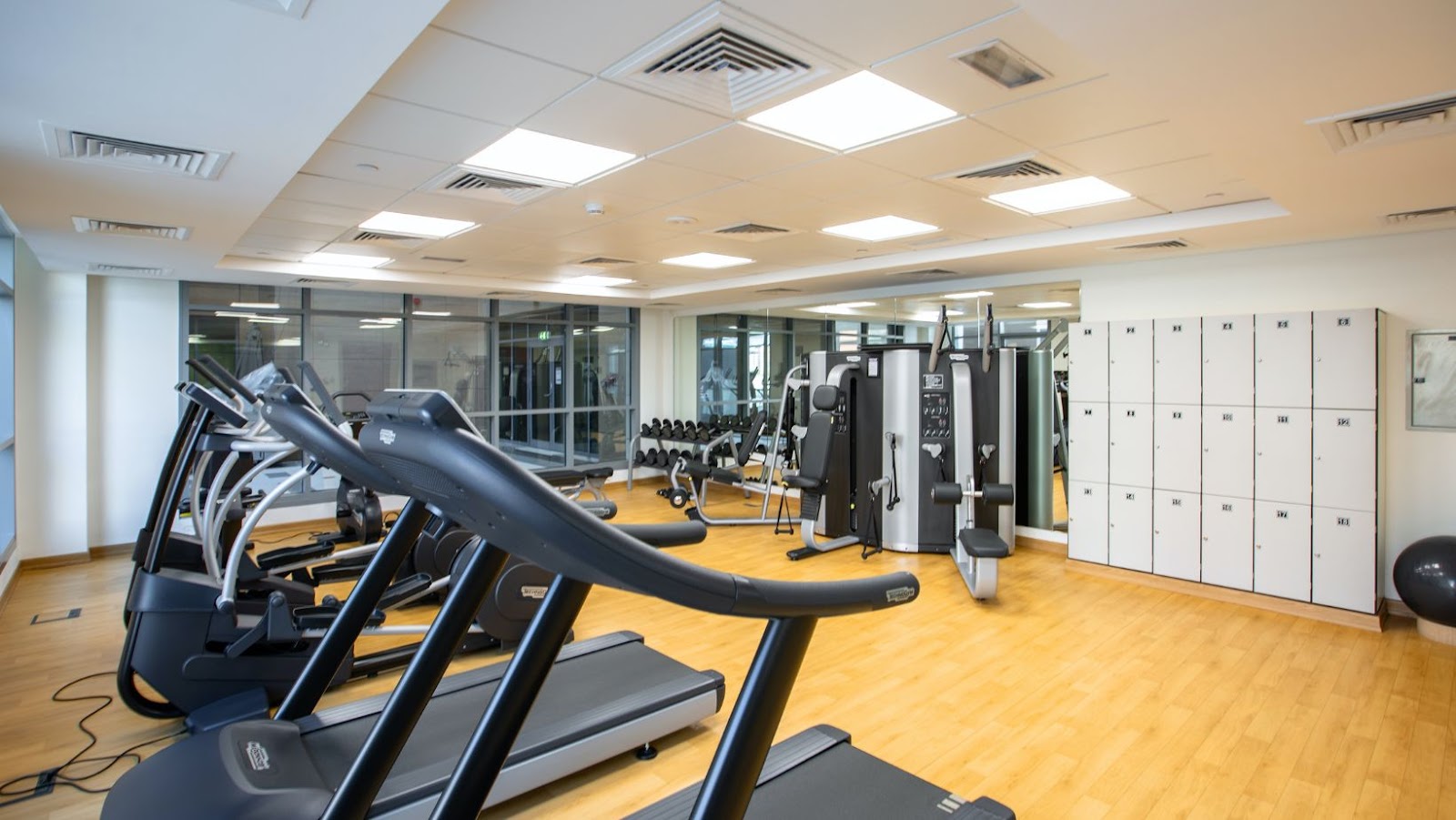Are you stuck between the decision of running on a treadmill or outside? If so, this article is for you! Unveil the key differences between running on a treadmill and outdoors, from convenience to intensity, and decide which option best fits your needs. Discover what’s best for your body and your goals as you step into a healthier lifestyle.
Running is an excellent way to improve your physical and mental health, but is there a difference between running on a treadmill vs. running outside? Let’s explore the pros and cons of each option.
|
Treadmill |
Outdoors |
|
Pros |
Pros |
|
Cons |
Cons |
Benefits of Running Outside
Running outside offers benefits that cannot be replicated on a treadmill. While running on the treadmill offers convenience and control, running outside provides physical, mental, and social advantages.
Physical benefits: Running outside offers a variety of terrains and elevations, which engages different muscles and promotes balance and coordination. Running on uneven surfaces such as trails, hills, and stairs can also increase endurance and burn more calories than a flat treadmill. The exposure to natural light and fresh air also provides a boost to the immune system and minimizes the risk of injury.
Mental benefits: Running outside offers a sense of freedom and liberation, which can improve mood, reduce stress, and boost creativity. Outdoor running allows the mind to wander, providing an escape from the monotony of everyday life.
Social benefits: Running outside provides an opportunity to connect with nature and other runners. Running groups and clubs offer a sense of community and support, which can increase motivation and accountability.
While running on the treadmill offers a safe and controlled environment, running outside provides a more holistic approach to fitness and wellbeing.
Benefits of Running on a Treadmill
Running on a treadmill offers several benefits that you may not get from running outside.
Firstly, running on a treadmill eliminates the unpredictability of outdoor environments such as varying terrain, weather, and traffic. This makes it easier to plan and maintain a consistent workout routine. Secondly, treadmills have shock-absorbing surfaces that reduce the impact on your joints, which can be beneficial for those with knee or joint pain. Thirdly, the ability to track your speed, distance, and calories burned on a treadmill can help you set and achieve your fitness goals. Lastly, running on a treadmill allows you to control your environment, such as the temperature and the availability of water, making for a more comfortable workout experience. However, running outside provides an opportunity to enjoy fresh air, natural scenery, and social interaction while exercising. It also targets more muscle groups due to natural inclines, making it a more challenging workout. Ultimately, the choice between running on a treadmill and running outside depends on personal preference and fitness goals.
|
Fact: |
Running on a treadmill can burn the same amount of calories as running outside. |
Running on Treadmill vs Outside
Whether to run outside or on a treadmill is a decision that should be based on various factors such as weather conditions, personal preference, fitness goals, and injury risk.
Running outside provides a more challenging workout due to natural terrain, wind resistance, and unpredictable weather. It can also offer greater mental stimulation and the opportunity to explore new environments.

On the other hand, running on a treadmill can provide a safer and more controlled workout environment while providing features like incline intervals and speed control. It also offers the convenience of working out indoors, especially on bad weather days.
Ultimately, the decision to run outside or on a treadmill should be determined by your personal preference, fitness goals, and injury risk. Whatever option you choose, ensure you stay motivated to stay committed to your fitness goals.
Pro Tip: Mix up your running routine by occasionally swapping between treadmill and outdoor running for an even better workout.
Potential Risks Associated With Running Outside
Running outside offers great health benefits, but there are some potential risks that you should be aware of. These include:
|
1. Uneven surfaces: |
Running on uneven terrain can lead to twisted ankles, falls, and other injuries. |
|
2. Weather hazards: |
Extreme heat or cold, rain, snow, and ice can cause slips, falls or even frostbite or heatstroke. |
|
3. Traffic risks: |
Running in busy areas exposes you to the risk of being hit by a vehicle, cyclist, or skateboarder. |
|
4. Crime: |
Running alone in poorly lit or unfamiliar areas may pose a risk of being a victim of crime. |
However, running on a treadmill can be safer, as it offers a consistent surface, protects against weather hazards, and eliminates the risk of traffic-related accidents. Treadmills also offer adjustable inclines, which can make for a challenging workout.
Regardless of your preference, it’s essential to stay safe, stay hydrated, and choose healthy options to fuel your workout.
Potential Risks Associated With Running on a Treadmill
While running on a treadmill is a popular option for many people, it does come with potential risks that should not be overlooked.
|
Potential Risks |
Description |
|
Overuse injuries |
Running on a treadmill can lead to overuse injuries due to the repetitive motion and lack of natural terrain variations. |
|
Joint strain |
The impact of running on a treadmill can put extra strain on your joints, especially if the treadmill is poorly cushioned. |
|
Safety hazards |
Running on a treadmill can be unsafe if proper precautions are not taken, such as using the safety clip and avoiding distractions. |
While there are potential risks associated with running on a treadmill, there are also benefits, such as the ability to control your environment and avoid outside weather conditions. Ultimately, the choice between running on a treadmill or outside depends on personal preference and individual health considerations.
Pro tip: To reduce the risk of injury while running on a treadmill, be sure to warm up, use proper form, wear appropriate shoes, and switch up your routine with interval training or incline changes.

In conclusion, the choice between running on a treadmill or outside depends on individual preference, accessibility, and fitness goals.
If you’re training for a specific outdoor race or event, then running outside to mimic the terrain and conditions is the best option. On the other hand, if you have limited access to safe outdoor spaces for running or live in extreme weather conditions, then a treadmill provides a consistent and controlled running surface with built-in safety features.
Each option also has its unique physical benefits. Running on a treadmill reduces the impact on your joints, while running outside strengthens stabilizing muscles and improves balance.
Whatever your choice may be, consistency and variation in your running routine is crucial for achieving your fitness goals. So go ahead, lace up your shoes and hit your preferred running surface!
Pro Tip: Incorporate intervals and incline changes in your treadmill runs to simulate outdoor terrain and increase the intensity of your workout.
Resources
Running on a treadmill and running outside are two different experiences, both with their benefits. However, here are some resources and points to consider when deciding between running on a treadmill or running outside:
|
Treadmill Running: |
Outdoor Running: |
|
– Treadmills provide a cushioned surface that can reduce the risk of injury. |
– Outdoor running provides fresh air and changes in terrain that can make your workout more interesting and challenging. |
|
– Treadmills allow you to control the speed and incline of your workout. |
– Outdoor running can increase your vitamin D exposure if you run in the sunlight. |
|
– Treadmills are convenient, as you can easily run indoors regardless of the weather conditions. |
– Outdoor running can be more enjoyable as it provides a change of scenery. |
Ultimately, the choice between running on a treadmill or running outside should depend on personal preference and specific fitness goals.
